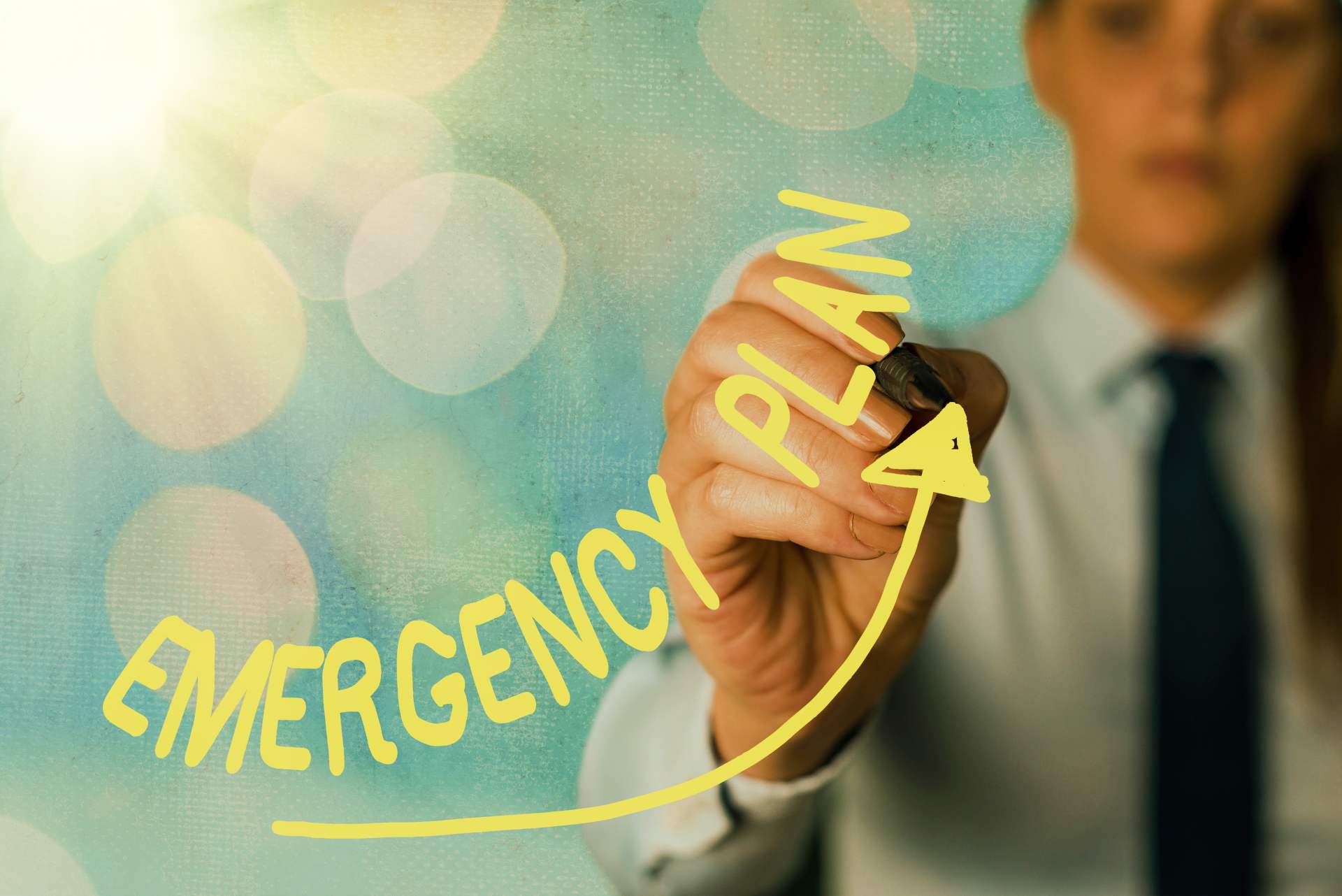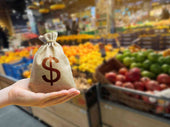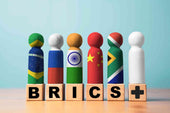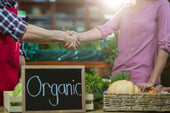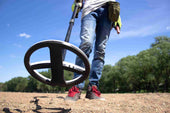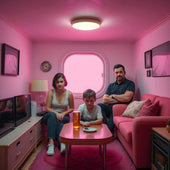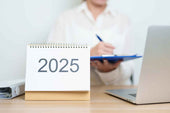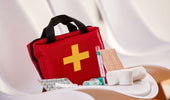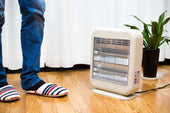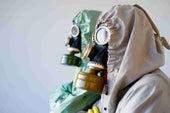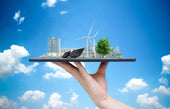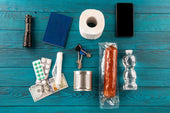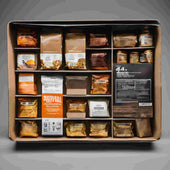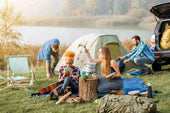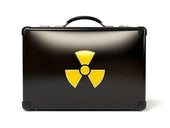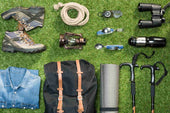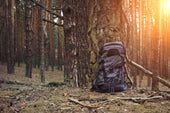Disasters, both natural and man-made, must be met with readiness, immediate response, and efficient recovery mechanisms.
This article teaches you to recognize the risks, confront the immediate impacts of different disasters, and recover afterward.
We will address the fundamentals of coping with floods, earthquakes, hurricanes, tornadoes, and blizzards, emphasizing the need for procuring, emergency intervention, and reconstruction with resilience in mind.
Blizzard

A blizzard is a massive snowstorm that resembles an explosion. Strong winds of over 35 mph, considerable snowfall, and extremely low temperatures reduce visibility and create hazardous driving conditions.
These extreme conditions may disrupt daily routines and infrastructure systems for four hours or as many as four weeks, especially in the northern midwestern United States, inland Western States, and the Atlantic coast.
Steps to Mitigate a Blizzard
Preparing for a blizzard is about taking preventive actions that keep you safe and warm inside and outside your house. Therefore, implementing these steps can greatly reduce the risks of severe winter weather:
Inside the Home
-
Insulate Your Home: Block the openings of windows and doors with weather stripping or install insulation kits to save more heat.
-
Draft Proofing: To prevent cold air from entering through the cracks under the doors or windows, use towels, rags, or draft stoppers.
-
Layer Clothing: Choose as many thin clothes as possible, and never wear too many layers. This will help you maintain your body heat.
-
Stay Informed: Check the developments and the blizzard's evolving track frequently through television, radio, or online sources, and bring along some battery-operated equipment, just in case the power goes out.
-
Prepare Emergency Supplies: Gather extra necessities, such as food, water, flashlights with batteries, and a first aid kit.
-
Ensure Heating Safety: If you rely upon alternative heating sources such as fireplaces or space heaters, note that they are equally dangerous and could cause carbon monoxide poisoning if they lack the necessary combustion safety systems and proper ventilation.
Outside the Home
-
Seek Shelter: Safeguard an area above high ground and dry before the storm worsens.
-
Protect Your Body: Wear clean, dry, and insulated clothes to avoid the risk of frostbite and hypothermia. Cover all body parts, but leave legs exposed to avoid causing injuries in the neck regions.
-
Avoid Alcohol: There should be no alcohol consumption due to its tendency to lower body temperature and impair reasoning.
-
Stay Awake and Visible: If you become stranded, stay awake and visible to rescue teams. Signal with lights, bright colors, etc.
-
Prepare Your Vehicle: If travel is the absolute last resort, make sure the car is correctly stocked with emergency materials, which include blankets, food, water, and a shovel.
-
Communicate: If you must be outside the home, disclose your location and travel itinerary to someone, specifying your destination and expected departure and return times.
These steps can help you minimize the risks and stay warm in your home with your family during a blizzard.
How to Survive a Blizzard
To survive a blizzard, you must act fast and strategically depending on whether you are indoors, outdoors, or in a vehicle. Here's a condensed guide to keep you safe:

Indoors
-
Insulate Your Space: Caulk your windows/doors. Use towels or sheets to prevent cold air infiltration.
-
Layer Clothing: To keep yourself warm, dress in many layers, including a scarf, hat, and socks.
-
Stay Informed: Create battery-operated internet or radio stations that enable you to listen to the storm.
-
Conserve Heat: Galvanize space heaters cautiously. Allow the sun to shine on you during the day, and close the curtains during the night to trap inside warmth.
Outdoors
-
Find Shelter: First, find a warm shelter to escape the cold. If no commercial or residential buildings are available, resort to your vehicle.
-
Maintain Warmth: Leave your car engine on for 10 minutes every hour for heat generation, ensuring the exhaust pipe is not clogged. Open a window for good airiness.
-
Signal for Help: At night, use your car’s interior light. During the day, tie a cloth to the dashboard or roof.
-
Build a Shelter: If you have no other option, build a cave or shelter using windbreaks or snow walls.
-
Start a Fire: Hense, if one can, for this reason. Put the stone border around the fire to keep the heat inside.
-
Avoid Eating Snow: Consume melted ice before drinking, as it helps prevent hypothermia.
These streamlined ideas could serve as a roadmap to staying safe during a blizzard, leading toward recovery and support. Regain your composure, keep a steady, warm body temperature, and always try to get some useful information. That is the best shot so far.
Recover from a Blizzard
Recovering from a blizzard calls for careful actions to be sure everyone is safe, and well-being is reestablished as individuals and communities struggle to restore normality.
It is highly recommended that the outcome be assessed carefully, that health and immediate needs be prioritized, and that aid be provided to the neighbors and community members.

Post-Blizzard Recovery Actions
-
Resume Activities Carefully: Slowly return to normal life and pay attention to potential hidden traps, such as ice and buildings made weaker by weather extremes.
-
Medical Attention: If health problems arise during the blizzard, whether minor or severe, seek medical treatment.
-
Community Support: Help the neighbors and the community, emphasizing those less fortunate or unable to remove snow or fix damages themselves.
In Vehicles
-
Signal for Assistance: After the storm, wave a white or light-colored piece of clothing to signify that you need help. When you raise your car’s hood after the storm because you were trapped, this could indicate that you are in distress.
-
Stay Active: Stretch and move through the vehicle to keep blood flow active, maintaining warmth and responding to strain.
Outdoors
-
Warmth and Rescue: This serves not only to maintain warmth but also to signal for rescue. If you find yourself isolated outdoors without shelter, it can also be used to start a fire.
-
Hydration: If needed, melt snow for water; take an adequate amount to keep you hydrated without risking hypothermia by consuming direct snow.
The practical application of the outlined guidelines after the blizzard will allow you to overcome the challenges and help the affected people. Recovery is important, and it focuses on nutritional rehabilitation, addressing health concerns, and building community resilience.
Check the other resources for more information:
Earthquake

An earthquake is a shaking of the Earth's surface triggered by volcanic activity or the breaking and movement of underground rocks. Its intensity is assessed using the Richter scale, which ranges from small or moderate to events of higher ranges.
While the west coast of the United States, particularly on the San Andreas Fault line, is the most active zone, other states like Memphis in Tennessee, St. Louis in Missouri, and New Madrid in Missouri can be considered to face considerable seismic risks due to their vicinity to major fault lines.
Tips to Mitigate Earthquake
Preparing for an earthquake requires both the structural design of the house and the stockpiling of essential supplies to ensure everyone’s safety.
Considering thoroughly and taking general active measures can greatly lessen the risks and possible damage from strong earthquakes.
-
Plan with Family: Talk with your family and develop an earthquake survival plan that considers evacuation routes and meeting points.
-
Gather Supplies: Assemble an emergency kit with water, food items, first-aid supplies, flashlights, and batteries. Place the batteries where they are easy to reach.
-
Secure Heavy Furniture: Install shelves securely with wall studs to prevent them from breaking or falling. Also, ensure all the heavy items placed on them are safe enough to avoid injuries.
-
Latch Cabinets: Mount latches on cabinet doors to shut the contents that could fall during shaking.
-
Rearrange Furniture: Arrange the beds and chairs so that they move away from the windows, and secure the tall objects by bonding them with strength to prevent them from falling.
-
Remove Hazardous Items: To avoid injuries from falling objects, remove all wall decorations, mirrors, and anything hanging over areas where people sit, sleep, or do other activities.
Surviving an Earthquake
When an earthquake occurs, what you do in the first seconds may greatly affect your safety. Regardless of your location—indoors, outdoors, or in a vehicle—knowing what to do when you find yourself in such a situation is considered required.

Indoors
-
Seek Shelter: Once it starts to shake, try to be under sturdy furniture or table, then grab tightly onto it until the shaking stops.
-
Stay away from Windows. Do not stand next to windows, as you may be injured by broken glass.
-
Be Prepared for Aftershocks: Stay in your secure spot, as aftershocks are equally dangerous as the main shock.
-
Evacuate if Necessary: If you see any indications that the building is being damaged, get out once the shaking stops. Do not use elevators; instead, use stairs at floor level.
Outdoors
-
Find a Clear Area: Go somewhere far from buildings, streetlights, and utility wires so that you do not be hit by falling objects.
-
Stay Alert: Stay vigilant of potential hazards that may arise from the environment itself.
In a Vehicle
-
Pull Over Safely: Find an open location free from obstructing trees, buildings, and tall structures. While still in the vehicle, start listening.
-
Avoid Bridges and Overpasses: This can cause the weak structures to collapse and break up when an earthquake occurs.
Adhere to these guidelines to raise your chances of surviving an earthquake. Remember that these steps are meant to safeguard you and help others.
Recovering from an Earthquake
Following earthquakes, recovery trails from evaluation, clean-up operations, and reconstruction. Here are steps to help you navigate the aftermath safely and effectively:

Immediate Steps
-
Inspect for Damage: Make a home inspection and ensure the place is safe and sound. Check for gas leaks, damaged electrical systems, and possible water supply problems. Do so carefully and appropriately, checking the buildings for damage before entering them that is deemed safe.
-
Listen to Authorities: Follow the directives issued by the local authorities regarding water safety and road closures. They have the necessary information about the shelters' safety.
Health and Safety
-
Attend to Injuries: Use first aid to treat minor injuries without delay and seek medical help for more serious issues immediately when it is safe.
-
Avoid Tap Water: The safety of tap water remains unclear until local health officials confirm its availability. Drink bottled water or boil water before consumption.
Clean-Up and Repair
-
Begin Clean-Up Carefully: When cleaning up, you must wear appropriate protective clothing to prevent injury from debris. Prepare to leave through safe points and stay in your living space.
-
Document Damage: Take videos or photos of damages you have incurred while filing insurance claims and seek the assessment and advice of qualified personnel for repairs.
Emotional Recovery
-
Support Network: Utilize local community support networks and mental health services to overcome the mental distress caused by the earthquake.
-
Stay Connected: Constantly contact your family, friends, and neighbors. The exchange of experiences and the ability to offer support bring emotional healing and well-being.
Preparation for the Future
-
Evaluate and Improve Preparedness: The agreement's highlight would be your earthquake preparedness measures review, where you would improve based on your experience.
-
Strengthen Your Home: Consider retrofitting to make your home more resilient to upcoming earthquakes. The focus is on strengthening the structure and anchoring all heavy items.
Recovery from a disaster is a complicated process that entails management of emergency relief, damage remediation, and mental balance. It is necessary not to rush, to be careful, and to be supported by the community to avoid the obstacles that follow post-earthquake.
Read these links for more information:
Flood

Floods, the overflow of water onto normally dry land, are triggered by heavy rainfall, hurricanes, snowmelt, and dam breaches.
This natural disaster can damage homes and infrastructure, disrupt transportation and utilities, and cause environmental issues such as soil erosion and deforestation.
Areas near streams, rivers, coastlines, lakes, and certain inland regions are particularly vulnerable to flooding, posing significant risks to people and wildlife.
Flood Mitigation Tips
Mitigating flooding is a way to lessen the damage and serves as an opportunity for quick evacuation. Here are key steps to reduce the impact of floods on your home and family:
-
Assess Flood Risk: Learn your flood zone by looking at the risk maps available for free at local authority offices.
-
Develop an Evacuation Plan: Choose your escape route wisely and rehearse it with all household members several times.
-
Invest in Flood Insurance. Most homeowner policies do not cover flood damage, so it's important to insure your property and belongings against floods.
-
Safeguard Important Documents: Seal the documents, foodstuffs, emergency supplies, and water in a tight container that can withstand rain and flooding.
-
Elevate Valuables: Relocate furniture and electronics to higher places so water won’t affect them during flooding.
-
Use Sandbags: To prevent water from entering, wall the sand-filled sacks at the doors and windows.
-
Prepare Your Vehicle: Your vehicle should have a full gas tank so that you can leave the gas station immediately in an emergency.
Among many actions, you can substantially mitigate flood hazards and allow the authorities to handle emergencies more effectively in the face of a disaster.
Ways of Surviving a Flood
Quick reaction and following safety instructions are particularly important for keeping alive during a flood if you are trapped inside your house. Here are essential tips to ensure your safety during a flooding event:

-
Stay Informed: Stay updated with the latest news by listening to the radio, watching TV, or checking the Internet for timely updates.
-
Evacuate if Necessary: If the situation worsens, always evacuate, thinking while listening to the local authority’s instructions.
-
Ensure Water Safety: Please boil or filter well water before you drink it. Otherwise, it might contain bacteria that can cause serious health problems.
-
Avoid Floodwaters: Do not attempt to drive or walk through swallowed floodwater. Even though the water is only six inches deep, it can still trip you over, and nine inches of water can take your car with it.
-
Steer Clear of Hazards: By all means, avoid bridges, storm drains, and irrigation submerged by water to avoid accidents of getting trapped or drowning.
This approach can ensure your and your family's safety in flood waters and increase your chances of surviving unpredictable natural disasters.
Recovering After a Flood
Post-flood recovery is about evaluating damages, safe cleanup, and constructing structures with resilience in mind. Here's how to approach it effectively:

-
Assess Damage: Whenever authorities announce that the area is safe to reenter, diligently check your property for water damage and any structural issues that may arise.
-
Document for Insurance: Before you submit your claim, record photographs and videos of the damage to include your insurance provider in your recovery plan.
-
Prioritize Safety: While wearing protective gear during cleanup is necessary to prevent contact with contaminated water or debris, other cleaning activities should also reduce exposure.
-
Begin Cleaning up: Throw away muddy and dirty water, use fans and dehumidifiers to dry your home, and eliminate damaged items that cannot be saved.
-
Check Utilities: Hire a professional to check and repair the gas, water, and electricity utilities before they are used again.
-
Prevent Mold: Cleaning and disinfecting all wet areas frequently to prevent mold growth.
-
Plan Repairs: Concentrate on repairing your home and consider using flood-resistant materials and methods to prevent future flood risk.
Fast response, safety measures, and accurate preparation are the essential guidelines for modern flood recovery and the most efficient way to reduce long-term consequences.
Check these links for more information:
Hurricane

A Hurricane is a violent, low-pressure system in the tropical Atlantic Ocean from June to November. Its winds are about 75 miles per hour or more. Hurricanes are accompanied by rain that can turn into storm surges, especially in coastal regions.
However, coastal storms are not automatically considered hurricanes per se since they do not originate in the tropics.
In the United States, the Gulf of Mexico and Southeastern seaboard are struck by more than five hurricanes annually.
It causes billions of dollars of damaged properties every year.
Mitigating Hurricanes
Reducing the destruction caused by hurricanes demands timely planning and action to protect our properties and lives. Here's how to prepare effectively for these powerful storms:
-
Know Your Area: Learn about your risk by checking if you live in a hurricane-affected area. Get acquainted with the evacuation routes and shelters nearby that you can access.
-
Evacuation Plan: Create a detailed evacuation plan with safe routes and destinations. Implement this plan as a household until all family members are familiar with it.
-
Emergency Supplies: Set up your emergency kit, including food, water, medicines, and first aid supplies. Make sure you have enough for at least 72 hours.
-
Prepare Your Vehicle: Do not let your fuel tank go empty, and ensure your car is in good condition so you can back it up in case of an evacuation.
-
Secure Communications: Make sure all phones and devices are fully charged. Investing in a solar-powered or hand-crank charger can help you remain connected when the power supply is off.
-
Home Preparations: Fortify your home with flood damage by placing furniture on top of floating pedestals, securing crucial papers in waterproof pouches, and reinforcing your home’s structure.
-
Electrical Safety: The customized layout of switches, sockets, and wiring will raise the electrical system to the standard above the highest expected flood level.
-
Landscaping: Cut down overhanging branches and shrubs to prevent them from breaking due to high-speed winds. Safeguard or tie down outdoor furniture and things that could whip around and act as projectiles.
Implementing such measures long before a hurricane can mitigate the impact and allow you and your family to stay safe.
Surviving Hurricanes
During a hurricane, more than anything, protecting your life and the lives of your relatives is of utmost importance. Whether you're caught outside, in a vehicle, or already sheltered at home, here are key steps to take:

-
Seek Shelter: If you are outside when the hurricane hits, go to an indoor shelter immediately. Ensure all windows and doors are tightly closed to prevent the flow of powerful wind and flying materials.
-
Stay Informed: Make sure to have a working battery-operated radio or heavily charged gadgets that you can use to listen to the orders and instructions of the authorities. Be prompt to take action if such an instruction is issued.
-
Indoor Safety: Get emergency items, including canned foods, water, and medical supplies. You will be fine staying in a safe room away from the windows and on the ground or one level away from ground level. It is preferably in the center behind a barricade.
-
Vehicle Precautions: If you find yourself out of your car, do not attempt to drive into flood waters. If you are at home, find a shelter in the building. Stay away from down power lines and clear of areas with falling debris.
-
Evacuate if Necessary: If the scenario worsens in your shelter or local officials instruct you, evacuate without wasting time by following their directions.
Following these rules will help you stay safe during a hurricane's confusing period, which may last a long time, and prevent you from getting hurt until conditions improve.
Recovering After a Hurricane
Post-hurricane recovery focuses on safety, damage assessment, and rebuilding efforts.

-
Ensure Safety: Go home if authorities say the situation is safe.
-
Assess and Document Damage: Thoroughly inspect all damages to the property and keep records for possible insurance claims.
-
Clean Up Safely: Put on protective clothing during clearing to manage debris and possible contaminants.
-
Restore Utilities: Look out for leaks of gas and any damages to electricity wires. Have professionals restore utilities.
-
To prevent mold, turn on all the fans in the house and use a dehumidifier to dry them out. This should stop the fungus from growing.
-
Seek Assistance: Use the services you find in Disaster relief if you need aid for the recovery or repairs.
-
Rebuild Wisely: The house's design could be upgraded with hurricane-resistant materials and repair methods to protect it from future storms.
Focusing on these focal points helps speed recovery and increase resilience against future hurricanes.
For more information, check out other resources here:
Tornado

A tornado is a strong and violent cyclone of air with a speed reaching up to 320 kilometers per hour and a width of only several hundred yards to over a mile.
There are tornadoes ranked by wind speed and extent of damage. They can occur anywhere in the United States.
However, the South and Midwest—especially the Texas, Kansas, Oklahoma, Mississippi, Alabama, Nebraska, Florida, and Georgia regions—are most prone to them.
Steps to Mitigate A Tornado
One of the steps to mitigating the impact of a tornado is to be aware of the risks, ensure that your home is ready, and organize the needed supplies. Here’s how to reduce the effects and ensure your safety:
-
Assess Risk: Find the tornado risk in your locality to inform you of the probable strategies.
-
Develop a Safety Plan: Develop a complete family plan that includes where you will go when a tornado warning is issued and the safe spots within your home.
-
Emergency Supplies: In an emergency, it is vital to have an emergency kit with necessary supplies, which includes food, water, and power sources like batteries or generators.
-
Secure Important Documents: Keep all papers and documents in a water-resistant and heat-resistant box in an easily accessible place.
-
Home Preparation:
-Raise appliances to avoid being submerged and damaged by the flooding.
-Codes provide a foundation for building electrical systems that are not only dependable but also reduce risks of fire.
-Remove and cut any possible trees as well as shrubs that may become projectiles in the event of a hurricane or storm.
-Strengthen doors, windows, and roofs to handle high winds.
These preventive actions will greatly alleviate the negative effects of tornadoes and will safeguard your family’s wellness.
Surviving a Tornado
When faced with a tornado, one of nature's most unpredictable and devastating phenomena, quick and informed actions can mean the difference between safety and peril.
Knowing the essential steps to protect yourself during these intense storms is crucial, whether at home or on the road.

If You're at Home
-
Seek Shelter Away from Windows: Move to an interior room on the lowest floor, such as a basement, bathroom, or closet, with fewer windows and walls between you and the outside.
-
Protect Yourself: Get under sturdy furniture for added protection against falling debris.
If You're in a Car
-
Find Shelter: Drive to the nearest sturdy building for shelter if possible.
-
Stay Put: If you can't get to a building, keep your seatbelt on, put your head down below the windows, and cover your head with your hands or a blanket to protect yourself from glass and debris.
Remember, trying to outrun a tornado in your car is extremely dangerous. Your priority should be finding a safe shelter location until the tornado passes.
Recovering After a Tornado
Post-tornado recovery involves quick action and careful planning:

-
Check for Safety: Inspect your surroundings for hazards before moving around.
-
Assess Damage: Evaluate your property for damage once it's safe, documenting all impacts for insurance.
-
Secure Property: Temporarily cover broken windows and damaged roofs to prevent further damage.
-
Clean Up: Clear debris safely, wearing appropriate protective gear.
-
Contact Insurers: Report damages to your insurance company promptly.
-
Seek Assistance: Utilize local disaster relief services for support and resources.
-
Plan Repairs: Prioritize repairs, considering stronger materials and construction methods for resilience against future tornadoes.
Focused and organized efforts can significantly streamline the recovery process after a tornado.
Final Thoughts on Disaster Preparedness
Indeed, disasters are unpredictable. Sometimes, you can't predict when earthquakes will come. However, several measures must be taken to minimize its damage to our lives.
Educate yourself on the types of disasters that might hit your community, such as blizzards, earthquakes, tornadoes, floods, and hurricanes. Learn about the risks of your location and familiarize yourself with the government's evacuation routes.
Equip yourselves with basic survival skills, and remember that disaster preparedness is everyone's responsibility.

